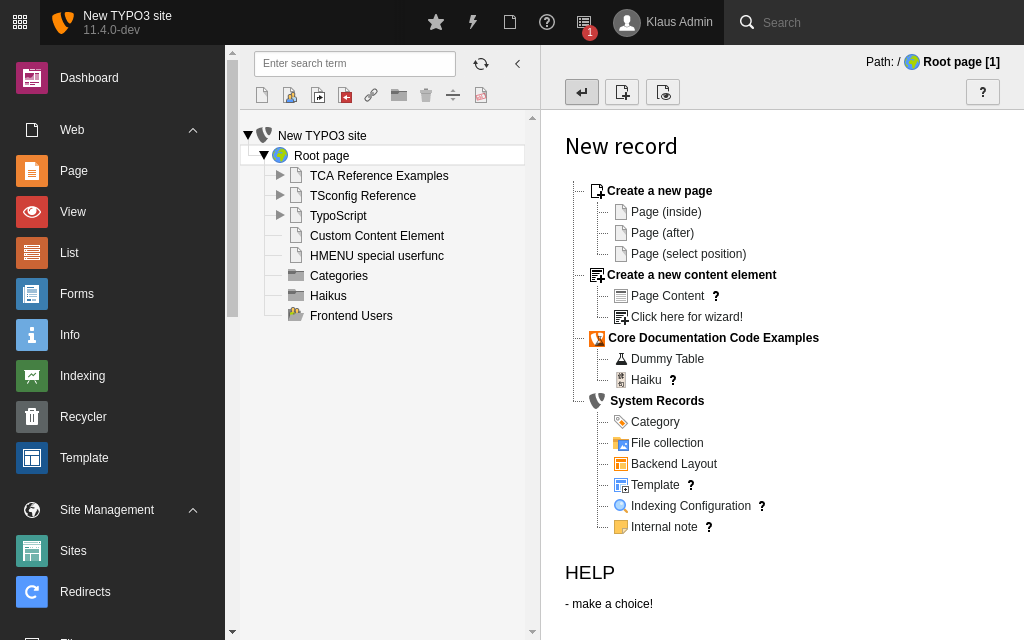XCLASSes (Extending Classes)
Introduction
XCLASSing is a mechanism in TYPO3 to extend classes or overwrite methods from the Core or extensions with one's own code. This enables a developer to easily change a given functionality, if other options like events or hooks, or the dependency injection mechanisms do not work or do not exist.
Warning
Using XCLASSes is risky: Your XCLASS may break if the underlying code is changed. Preferably use events or hooks to extend class functionality. For other limitations see XClass limitations
If you need a hook or event that does not exist, feel free to submit a feature request and - even better - a patch. Consult the TYPO3 Contribution Guide about how to do this.
How does it work?
In general every class instance in the Core and in extensions that sticks to
the recommended coding guidelines is created with the API call
\TYPO3\.
This method takes care of singletons and also searches for existing XCLASSes.
If there is an XCLASS registered for the specific class that should be instantiated,
an instance of that XCLASS is returned instead of an instance of the original class.
Limitations
- Using XCLASSes is risky: neither the Core, nor extensions authors can guarantee that XCLASSes will not break if the underlying code changes (for example during upgrades). Be aware that your XCLASS can easily break and has to be maintained and fixed if the underlying code changes. If possible, you should use a hook instead of an XCLASS.
- XCLASSes do not work for static classes, static methods, abstract classes or final classes.
- There can be only one XCLASS per base class, but an XCLASS can be XCLASSed again. Be aware that such a construct is even more risky and definitely not advisable.
- A small number of Core classes are required very early during bootstrap before configuration and other things are loaded. XCLASSing those classes will fail if they are singletons or might have unexpected side-effects.
Declaration
The $GLOBALS global array acts as a registry
of overloaded (XCLASSed) classes.
The syntax is as follows and is commonly located in an extension's
ext_localconf.php file:
<?php
declare(strict_types=1);
use MyVendor\MyExtension\Xclass\NewRecordController as NewRecordControllerXclass;
use TYPO3\CMS\Backend\Controller\NewRecordController;
defined('TYPO3') or die();
$GLOBALS['TYPO3_CONF_VARS']['SYS']['Objects'][NewRecordController::class] = [
'className' => NewRecordControllerXclass::class,
];
In this example, we declare that the \TYPO3\ class
will be overridden by the \T3docs\
class, the latter being part of the
t3docs/examples
extension.
When XCLASSing a class that does not use namespaces, use that class name in the declaration.
Coding practices
The recommended way of writing an XCLASS is to extend the original class and overwrite only the methods where a change is needed. This lowers the chances of the XCLASS breaking after a code update.
Tip
You are even safer if you can do your changes before or after the parent method
and call the latter with parent::.
The example below extends the new record wizard screen. It first calls the original method and then adds its own content:
class NewRecordController extends \TYPO3\CMS\Backend\Controller\NewRecordController
{
protected function renderNewRecordControls(ServerRequestInterface $request): void
{
parent::renderNewRecordControls($request);
$ll = 'LLL:EXT:examples/Resources/Private/Language/locallang.xlf'
$label = $GLOBALS['LANG']->sL($ll . ':help');
$text = $GLOBALS['LANG']->sL($ll . ':make_choice');
$str = '<div><h2 class="uppercase" >' . htmlspecialchars($label)
. '</h2>' . $text . '</div>';
$this->code .= $str;
}
}The result can be seen here:

A help section is added at the bottom of the new record wizard
The object-oriented rules of PHP, such as rules about visibility, apply here. As you are extending the original class you can overload or call methods marked as public and protected but not private or static ones. Read more about visibility and inheritance at php.net
